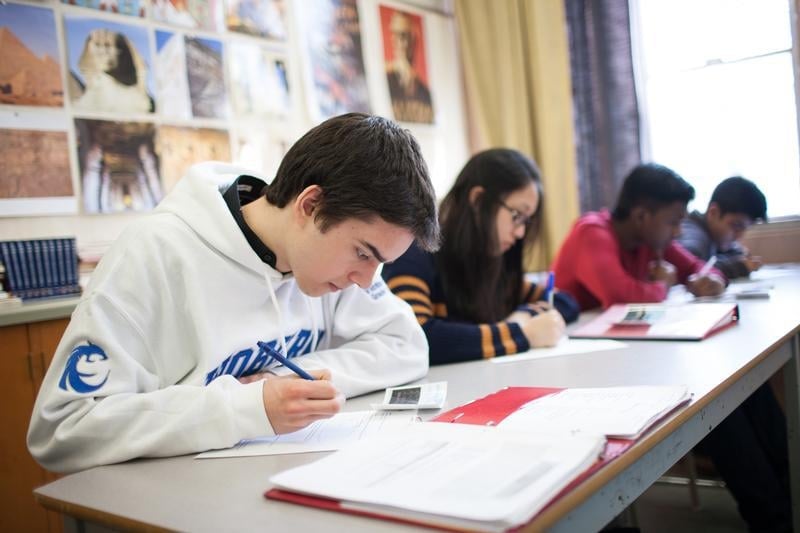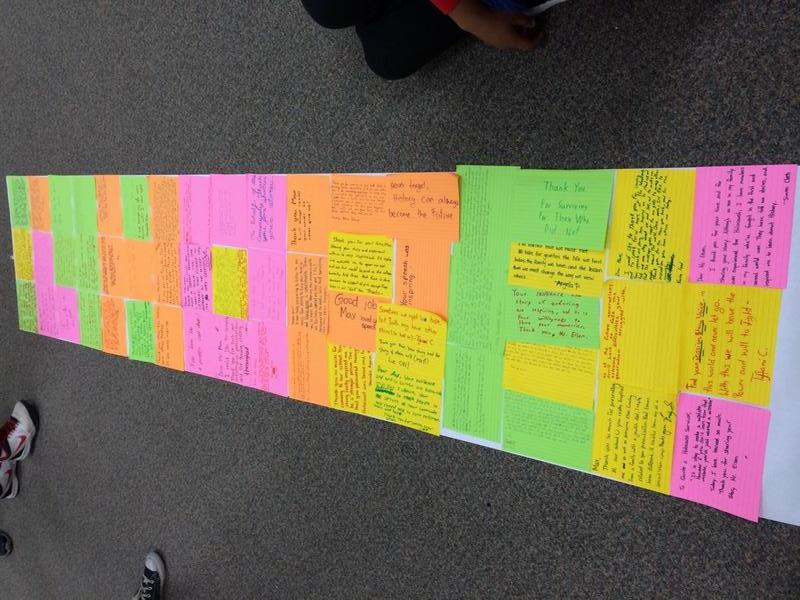For the past few weeks, I have been thinking and writing about ways to bring The Book of Negroes into the classroom through discussions of identity, and a study of the history of race and slavery in America.
The first post offered ideas for establishing a safe classroom for discussing difficult ideas through contracting. It also offered a strategy for exploring names, identity, and the relationship we each have to the world. The second post built on the theme of identity by examining the beliefs we hold that separate us from others, and how our beliefs can influence the choices we make. This week, I want to address how teachers can bring the book’s difficult moments into the classroom safely.
Lawrence Hill’s novel and the CBC/BET miniseries adaptation have recreated such vivid, emotionally-charged moments about our difficult past with slavery. It is at times horrifying, at times devastating. How do we address these difficult moments in the classroom?
Have students SIT and reflect on a difficult moment:
My colleague in Memphis Steve Becton introduced me to a simple, but effective prompt for students to reflect on a difficult text or film many years ago at a seminar on teaching about the Holocaust. He asks, How does this passage or film SIT with you?
- What do you find Shocking or surprising?
- What do you find Interesting or intriguing?
- What do you find Troubling?
Students use these simple prompts to journal responses prior to a partnered sharing or a larger class discussion. These prompts are open for students to make observations and personal connections, but also to raise big questions of human behaviour, history, and justice addressed in the novel.
 Students in a Facing History classroom take a moment to write their reflections and questions in response to an image or text they are analyzing. Photo credit: Nick Kozak
Students in a Facing History classroom take a moment to write their reflections and questions in response to an image or text they are analyzing. Photo credit: Nick KozakSharing and debriefing the moment:
It’s important to allow each student to have a voice in a debrief about a difficult moment, while respecting students’ right to pass.
- If your students are vocal, one strategy you can use to give each student an opportunity to share is to do a “Go-Around.” Ask each student to share one word that reflects his or her response to the difficult moment raised in the text before opening up a discussion.
- If your students are not as quick to discuss their ideas aloud, you can ask students to first write a personal response, connection, or question on a post-it note. You can then display all of the notes on a class “graffiti board” that students can read, taking in their classmates’ responses and engaging in a silent dialogue by writing their own reactions, connections, and questions to others’ notes.
- Lastly, as your class begins to raise contemporary, and potentially controversial, questions inspired by the novel, you may want to try the strategy Learn to Listen, Listen to Learn, which gives students a structured approach for small group discussion.
 Students place their individual reflections on a graffiti board to spell HOPE in response to hearing a Holocaust survivor's testimony.
Students place their individual reflections on a graffiti board to spell HOPE in response to hearing a Holocaust survivor's testimony.Highlighting Resilience, Resistance, and Rescue
Rabbi and author Malka Drucker wrote in Rescuers: Portraits of Moral Courage in the Holocaust:
It is tempting to make Jewish rescue more than it was. Many of us will grasp at anything that helps to soften the agony of confronting the Holocaust...Historically, the rescuers deserve at most a paragraph in a book about Holocaust, because in number, they were a raindrop in an ocean of indifference. Yet, emotionally, spiritually and psychologically, the rescuers deeds are without measure...They inspire us today to the highest and the best we can do.”
With Rabbi Drucker’s warning in mind, I would try to follow a conversation about victimization, injustice, and hatred with a conversation about the other side of the human capacity: that of resilience, resistance to hatred, and rescue. I am reminded of the “danger of a single story” when I think about how we often pause to reflect only on moments of victimization and injustice in a narrative, which leaves us biased about the whole story of individuals or groups. Fortunately, Hill’s novel provides us with rich characters whose responses to victimization and injustice break the mold of a single story and give us an avenue to discuss not only the victimization of black African and American slaves, but also their agency, resilience, and humanity as well. There are myriad ways in which Aminata chooses to resist the dehumanization of slavery, not least of which is her choice to tell her story in the fight for abolition. Aminata’s strength and search for justice can remind our students today that we have the capacity to acknowledge, remember and overcome the dark legacy of the past.
One way to encourage students to engage in discussions about resistance, resilience, or rescue is to choose excerpts of the text in which characters make choices to resist or rescue, and ask students to present these moments using a Reader’s Theater strategy. This strategy encourages students to process dilemmas a character may experience in a text and present the key message, theme, or conflict, rather than focusing solely on the plot.
While this post has focused on ways to bring emotional and ethical discussions to light, I would also recommend you check out stories and blogs that bring in the historical documents and narratives that connect The Book of Negroes to history.
LEARN MORE about teaching the legacy of slavery using a case study on The Reconstruction Era: The Fragility of Democracy, set in the United States from the Emancipation Proclamation to Jim Crow (1863-1877).



